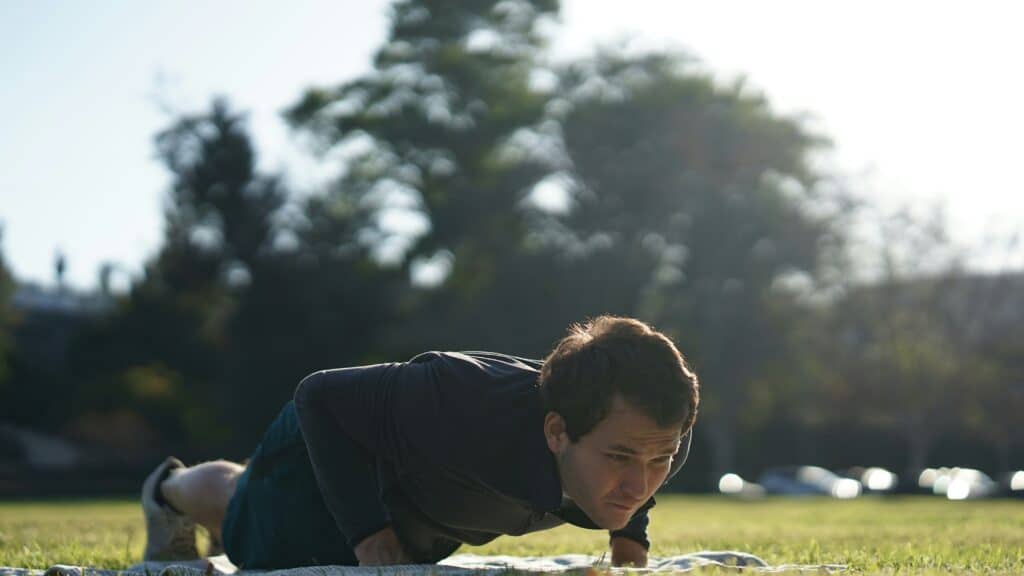Have you ever felt like stress was running through your veins, as constant as blood itself? This blog post unveils the powerful narratives of individuals like John and David, who each faced the monumental task of managing stress.
Readers will learn how small daily changes, such as reducing caffeine intake or practicing mindfulness, can help overcome irritability and reclaim confidence. Rather than resorting to medication, these stories showcase alternative strategies for finding balance.
By engaging with these personal accounts, you will discover actionable tips for stress management that may resonate with your own life. They offer a roadmap toward a calmer, more centered you.
Key Takeaways
- John found stress relief through a blend of professional support and personal wellness routines
- David’s practice of mindfulness revealed the power of meditation in managing life’s tensions
- Alex’s proactive measures against stress prove the importance of exercise, diet, and a strong support system
- Lisa’s academic success was rooted in effective time management and prioritizing personal well-being
- Sarah underscored the efficacy of mutual support and community engagement in building resilience to stress
John’s Journey to Overcome Workplace Stress

John’s journey began with acknowledging the relentless heart rate spikes and sleepless nights plagued by insomnia—a stark sign of chronic stress. Realizing the need for change, he took proactive steps toward stress management.
This segment delves into how he implemented workplace stress-reduction techniques, including focused breathing exercises. When self-help was insufficient, John sought professional guidance, which opened the door to achieving a healthier work-life balance.
These narratives not only showcase John’s path to wellness but also offer practical insights for others to follow.
Recognizing the Signs of Chronic Stress
As John’s days became ensnared in a relentless cycle of deadlines and demands, his body started to sound the alarms: rising cortisol levels led to a persistent sense of alarm, his brain struggled with concentration, and unexpected weight gains hinted at stress-induced obesity. It was in the chronic tightness in his stomach and the mental fog that he began to recognize the undeniable signs of chronic stress—a common adversary to many striving professionals. After long nights overshadowed by the specter of grief for his fading well-being, John realized he could not navigate this path alone.
Consistent distress had etched deep grooves of worry in his life, but with this recognition came the power to seek change. The following table summarizes John’s key signs of chronic stress:
| Sign of Stress | Effect on John’s Life |
|---|---|
| High Cortisol Levels | Persistent sense of alarm |
| Concentration Issues | Decreased productivity at work |
| Weight Gain | Stress-induced obesity |
| Stomach Tightness | Physical discomfort and anxiety |
| Grief | Emotional strain affecting personal life |
Taking the First Steps Toward Change
John’s initial step towards transformation involved adapting his behavior to manage work-related stress. He introduced short, focused breaks into his day to combat the energy drain, allowing moments for recuperation that improved his overall mood. Swapping prolonged hours at his desk with periodic walks, John noticed a gradual but meaningful shift in his daily adrenaline levels, experiencing less sadness and a stronger sense of control.
Understanding that stress was not just a mental battle but a physical one, John integrated simple exercises to dispel the tension. These activities not only broke the monotony of his routine but also recharged his energy reserves.
By consistently carving out time to prioritize his well-being, John’s proactive behaviors laid the groundwork for a more sustainable and rewarding career journey.
Implementing Stress-Reduction Techniques at Work
John discovered that planned relaxation and timed breathing exercises were prime tactics in his quest for stress management. With guidance from a mental health professional, he learned to identify the onset of panic and fatigue. This empowered him to take immediate action, preventing the escalation of stress into full-blown depression.
About halfway through his journey, these deliberate, small rituals became a cornerstone of John’s daily work life, offering steadiness in the face of mounting pressures. His newfound techniques, including scheduled downtime and mindfulness sessions, not only alleviated his stress but also rekindled his work performance and enthusiasm.
Seeking Professional Help and Support
When John’s own coping mechanisms were not enough, he made the crucial decision to seek professional help. Embarking on this stage of his journey, he found comfort and strategy through therapy, where tackling the root cause of his stress became a central goal. Regular consultations provided John not only with an outlet for his feelings but also with structured plans and tangible habits to manage his stress levels effectively.
At his therapist’s suggestion, John began incorporating yoga into his routine, addressing both physical tension and mental fear. This practice enhanced his ability to remain present and reduced the frequency of stress-related disruptions. For John, yoga became a powerful ally in his work-life balance, demonstrating that the right support can turn a once elusive goal into an attainable reality.
David’s Story of Battling Stress With Mindfulness

David’s quest for peace led her to discover mindfulness, a tool that promised lower blood pressure and relaxation amidst life’s pressures. She wove meditation into her daily routine, facing obstacles as she navigated the complexities of the practice.
With consistency, David noted a slowing down of her aging process and enhanced mental health, inspiring others to embrace exercise and mindfulness for a more balanced existence. These stories reveal the practical steps and positive outcomes of her mindfulness journey.
Discovering Mindfulness as a Stress Relief Tool
When David began noticing the classic signs and symptoms of stress weighing heavily on her day-to-day activities, she understood the need for a change. Her learning about mindfulness came at a critical point, offering relief and a complete shift in how she engaged with her inner psyche. This simple yet powerful practice slowly became her refuge, promoting a peaceful mind even amidst chaos.
As she incorporated mindfulness into her routine, David found a sustainable method of coping with daily pressures. Through intentional focus and calm breathing, she harnessed the ability to stay present and reduce stress.
This approach bestowed tangible benefits as the feelings of being overwhelmed faded, replaced by a sense of clarity and control over her mental and emotional well-being.
Incorporating Meditation Into Daily Routines
David weaved the threads of meditation into the fabric of her life, finding moments of calm between the roles of parent and professional. Her commitment to this practice illuminated the connection between psychology and stress relief, revealing the profound influence meditation has on diminishing worry. With every mindful breath, David mitigated the risk of burnout, infusing her day with tranquility without disrupting her responsibilities or nutrition.
Through the lens of meditation, David gained a new perspective on life’s daily pressures. By allocating time each morning to center her thoughts, she armored herself against the day’s potential stresses.
This ritual turned into a stronghold against anxiety, proving that even amidst a bustling lifestyle, one could cultivate a sanctuary of peace through the consistent practice of meditation.
Overcoming Obstacles in the Mindfulness Journey
David’s commitment to mindfulness faced its share of challenges, including days when pain and distraction seemed to reign supreme. She learned that attention must be nurtured, a skill just as crucial for the mind as for any muscle susceptible to disease. Mindfulness, while offering a path to happiness, demanded perseverance, especially when combating the allure of quick fixes like alcohol or escapism.
| Obstacle | Impact on Mindfulness Practice | Method of Overcoming |
|---|---|---|
| Physical Pain | Disrupted focus and relaxation | Adapting meditation posture and duration |
| Distracting Thoughts | Reduced the quality of presence | Consistent practice and mindfulness training |
| Temptation for Quick Fixes | Risked reliance on substances like alcohol | Reinforcing mindfulness as a healthier coping mechanism |
Despite the hurdles that manifested along her journey, David remained steadfast in her practice. With each challenge, she found innovative ways to redirect her attention back to the present moment. These experiences not only strengthened her mindfulness skills but also equipped her to aid others in starting their journeys free from stress and full of calmness.
Experiencing Positive Changes in Mental Health
As David continued to make mindfulness a staple in her life, she noticed a significant shift in her mental health. The grip that frustration once had, often tightened by personal life stressors like debt or divorce, started to weaken. Meditation granted David a valuable tool that softened the mental strain these issues could cause, allowing her to manage even the most daunting information with a sense of calm.
With time, mindfulness not only prevented the daily build-up of tension but also fortified her mental resilience like a strengthened muscle. David found a noticeable reduction in her stress levels, leading to improved focus and decision-making capabilities.
The emotional heaviness that had once permeated so much of her life lightened as she skillfully navigated through challenges with a more serene and composed mindset.
Conclusion
Real-life personal stories of overcoming stress prove immensely valuable. They show that proactive stress management techniques and support systems can significantly enhance well-being and resilience. They serve as blueprints for others, illustrating practical strategies such as mindfulness, regular exercise, and goal setting that lead to a balanced and fulfilling life.
By sharing these narratives, individuals discover they are not alone in their struggles, gaining strength from the communal wisdom of overcoming challenges.
In essence, these stories not only inspire but also equip us with the tools necessary to navigate life’s pressures with confidence and support.




